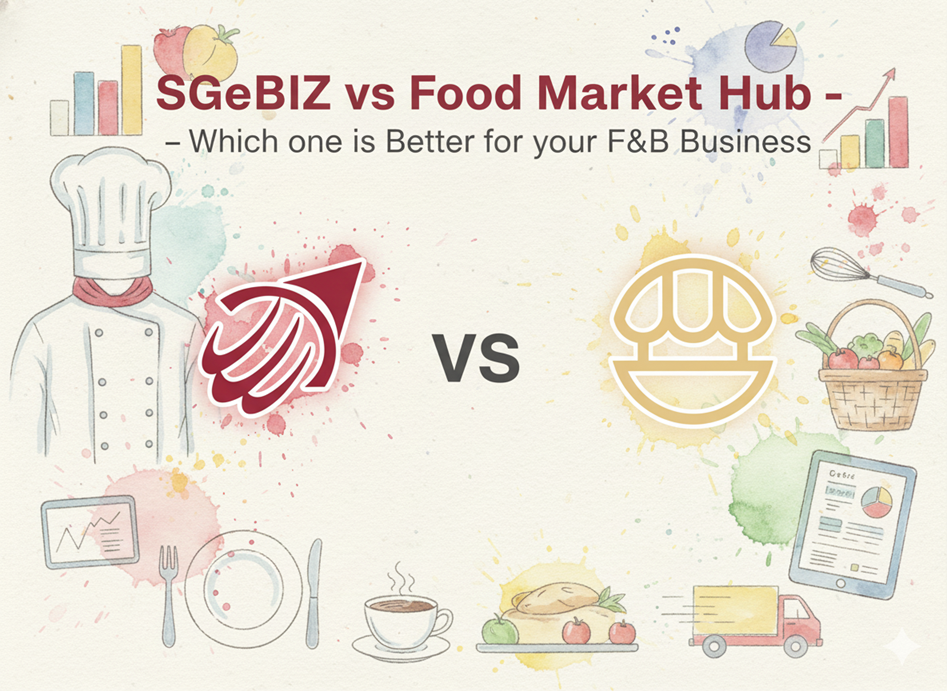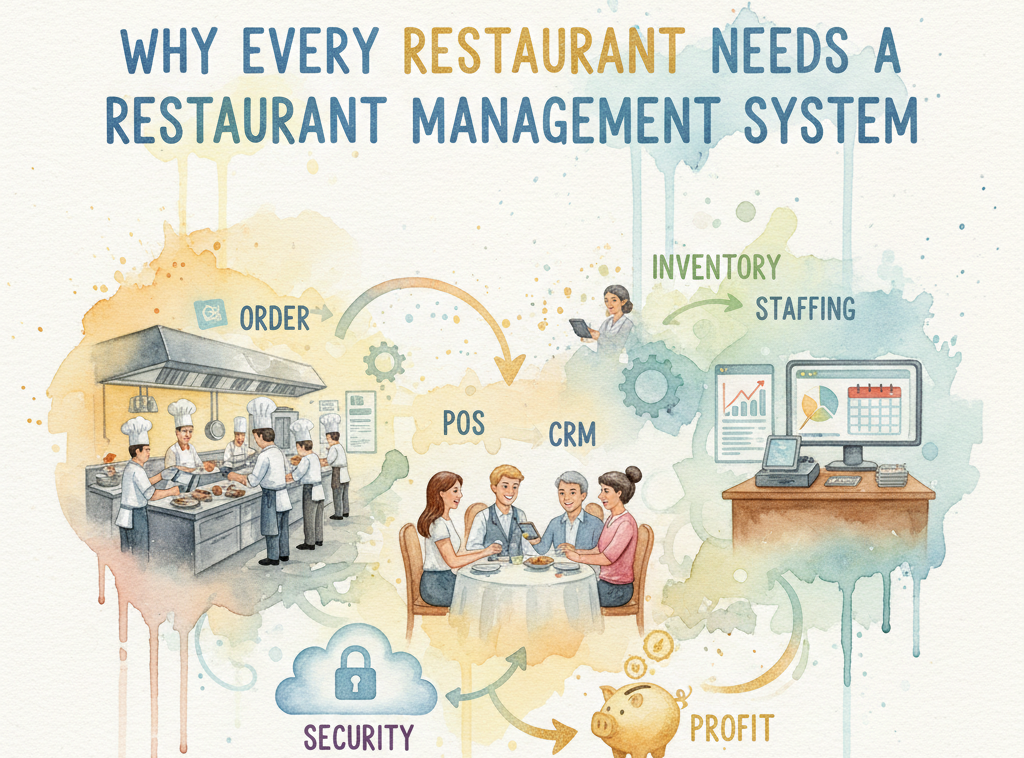10 Best Practices For Restaurant Inventory Management
.jpeg)
If you want your restaurant business to succeed in this competitive market, you will need to focus on what matters the most. This includes properly taking and managing your orders, creating the right menu for your restaurant, and restaurant inventory management.
Although other areas of your business such as promotion and marketing are also crucial, we are going to be focusing on the inventory management part of your business for the purpose of this article.
Every single operation in your business has a definite role in the running of your restaurant.
If you think about what the major investments in your restaurant business are, it would be the inventory and stock. When we say inventory, we mean all the raw materials and ingredients that are used in the kitchen to create all the dishes on the menu.
Effective restaurant inventory management would mean promptly and accurately tracking the stock and usage of each ingredient or raw material that is used in your restaurant.
Now there will be times when your margins shrink - your expenses increase while your profits go down. In times like these, it helps to analyze the things you are doing, and check if you can reduce certain recurring expenses.
Keeping track of your inventory manually is a tedious process, which is why it is recommended that you switch to an easier, automated method of restaurant inventory management. Doing so will allow you to save loads of time and energy, and also help you to be more accurate in your management, with a reduced chance of human error.

You could be saving your business a lot of revenue that is otherwise lost due to faulty transactions and careless inventory management.
It is found that every restaurant throws away at least 10% of their inventory in the trash due to spoilage or wastage. Finding ways to effectively manage your inventory can help you reduce your wastage.
In this post, we are going to be talking about the best practices you should follow for your restaurant inventory management. Remember that taking stock of inventory doesn’t just mean scanning barcodes. It refers to accounting for all the raw materials present inside the kitchen, as well as the items present in your storage rooms.
There are many ways you can lose inventory like spoilage, wastage, thefts, and calamities. You can not control theft and calamities resulting in loss of your inventory. However, you can control spoilage and wastage of resources to an extent by carefully managing your restaurant inventory.
The following are some best practices for your restaurant inventory management:
1. Get a Good Restaurant Inventory Management Software
The first thing you need to do to effectively manage your restaurant software is to get an automated restaurant inventory management system in your business.
It will automatically reduce your expenses and help you in your everyday restaurant operations. The software will help you keep track of your stocks during shift changes and help you manage your inventory by giving you real-time updates of your inventory.
2. Give Your Staff Good Training
Whenever you introduce new software or equipment to your company, you will have to train your staff on how to use it the right way. It doesn’t matter whether your staff is already tech-savvy or not. Good training will help them get the hang of your new systems and software, and working on them daily will give them the practice they need to get good at it.
Talk to them about how they can save on inventory wastage and track all the inventory coming in and going out of the kitchen. This will help them effectively manage restaurant inventory without constant supervision or guidance.
Once your staff becomes adept at managing restaurant inventory, you will find your wastage drastically reducing and your profits steadily going up.
3. Provide Restricted Access To Your Inventory Data
It is always good to keep your restaurant inventory data secure. This means you should only give access to your staff according to their responsibilities at your restaurant. You can set up user accounts for chefs, waiters, managers, etc. so that each user has the required access to the information they need.
You can allocate separate ids and passwords for each user. This will also help you keep a record on which information is being accessed by whom.
4. Streamline Your Inventory Usage
Ensure that your staff arranges the inventory according to their expiry dates, with the food that is closest to its expiry date in the front. This holds good for even the ready-to-serve food items that have been prepared for the day.

This is also called the FIFO (First In First Out) rule, meaning whatever stocks enter the kitchen first need to get used first. This will greatly reduce your wastage and spoilage.
5. Limit Your Storage Capacity
Try to limit your storage capacity so that you do not keep more inventory than you require. Alo, keeping a lower limit will help you ensure that you always have enough stock till your next orders get delivered. Keeping a higher limit ensures that your food is not spoiled or wasted, but used efficiently.
Keeping these limits will take away a lot of your efforts in constantly maintaining and balancing a good inventory for your restaurant. It also keeps your kitchen, storage rooms, and warehouse organized and tidy.
6. Check Your Inventory Regularly
It’s definitely not possible for you to do an inventory check multiple points in the day. And asking your staff to stay long after closing hours can also be difficult for them.
The best way to keep a regular check on your inventory is through a restaurant inventory system that automatically calculated your inventory at the beginning and end of each step. This helps rule out errors on calculation and helps you take regular checks of your inventory without taxing your staff.

The inventory software will continuously track your inventory without disrupting the normal flow of movement or usage of items.
You can then easily tally your inventory with the stock that’s left behind at the end of the day and calculate your restaurant’s inventory consumption.
7. Maintain Your Restaurant’s Taste And Quality
People love your restaurant because of the type of food you serve and the quality you maintain. WIth ever-changing chefs and kitchen staff, it can be tough to maintain the same kind of taste and quality of each dish for your customers.
Storing recipes, ingredients, and other essential information in your restaurant POS system such as pictures of dishes or videos showing the preparation of these dishers will help you maintain the same superb taste and quality your restaurant is known for.
This will help your chef to maintain the authenticity and taste of each dish while keeping an eye on the restaurant inventory and stock so that he can prepare the dishes being ordered every day.
8. Prevent Misuse of Inventory Items
When you have a good restaurant inventory management software in your restaurant, it can be easy to avoid misuse or poorly managed use of inventory items by your kitchen staff. For instance, you could set up inventory request approval that ensures that kitchen staff can only use your inventory items once it has been approved by you.
This will help you keep track of all the items in use and approve inventory requests.

Similarly, you can also have purchase requests sent to you for approval by your staff members This ensures that you are always aware of all the things being ordered for the kitchen and nothing gets ordered in excess.
9. Regularly Update Menu Prices
There are a lot of variables you have to take into consideration when setting your restaurant menu prices. From overhead costs to ever-changing inventory prices, you need to factor in all price increases when updating your menu prices.
It is important to set your prices in such a way that during regular sales, your inventory, overhead, and utilities costs are covered.
10. Use a Central Kitchen
A central kitchen is very useful if you have many different outlets in the same region. You could use that kitchen to prepare your main ingredients and then shift them to their respective outlets where they can quickly be made ready to serve. A central kitchen allows you to save money on deliveries, reduce wastage, and manage your restaurant inventory.
A central kitchen combined with a good restaurant inventory system allows you to manage your restaurant better and keep track of your inventory at all times.
Following these few restaurant inventory management best practices will help you manage your inventory and reduce wastage. One of the best ways is to use a restaurant inventory management software and have a central kitchen in case you have a chain of restaurants that you run.
A restaurant management software will allow you to take care of everything from the ordering and food preparation to the final serving and inventory management for your restaurant. This will allow you to maintain consistency in customer service and ensure that your customers are always satisfied with your dining experience!










